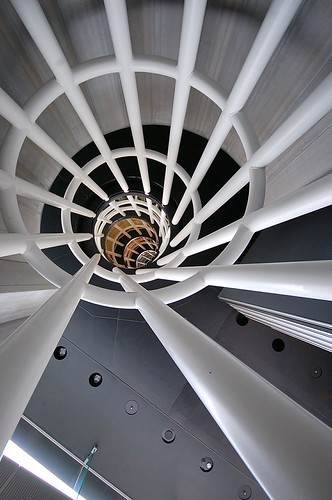Sendai Mediatheque


- A combination Library and Museum
- Located in Sendai Japan
- Completed in Jan 2001
- Designed by Toyo Ito
- Flexibility of Space - Museum and Library have blurred boundaries
- "barrier free"
- Tubes, Plates, Skin
Concept: "The building was conceived as a transparent cube through which thin floor plates float suspended on organic-looking seaweed-like “tubes.” The cube was meant to be read as a small representative element of an infinite, viscous information space, with the four edges sealed with glass facades which, through their reflections, would allow the building to alternately dematerialize or repeat itself creating a kind of ephemeral connection with infinite space."
"In terms of architectural genre the Sendai Mediatheque was a pioneering example of attempts to use new notions of 'media' as an architectural concept."
Ito's intentions were to create a "barrier free" space that bled out into the city and blurred programming within the building. I think he was quite successful achieving these goals with his design. He used tubes to penetrate and connect every floor of his building - some of these tubes carry utilities, and others egress. The use of these "tubes" also allows for very open and flexible floors. It appears as though their uses can adapt and change with the future needs of the library and museum. As for his concept of using "'media' as an architectural concept," it seems this idea may have been a stretch.
Ito also attempted to blur the inside and outside of the building, connecting the building to the rest of Sendai. Here I think he was very successful, moving the supporting columns away from the exterior and disguising them as "tubes." Thin floor plates were left visible from the exterior through a minimal glass facade. He also used color coding to distinguish programming that is visible from the exterior.
I would argue that a more simplified and straightforward concept of Ito's was flexibility.










No comments :
Post a Comment